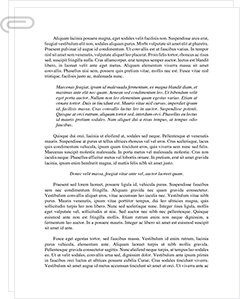 Study Document
Study Document
JetBlue Airways Strategies Economical, Social Moral Impact Essay
JetBlue Airways strategies
Economical, social moral impact strategies jetblue airways.
JetBlue Airways is an airline company that has its' headquarters located in the city of New York from where it operates an approximately six hundred and fifty daily flights going in and out of sixty one different United States' cities. According to a recent survey conducted by J.D. Power and Associates, the airline has been able to maintain its' reputation for six years consecutively as one of the low-cost carriers which offers highest customer satisfaction in terms of its' service, another survey also ranked JetBlue Airways as the most Eco-friendly Airline both in 2008 and 2009 (Rigas, 2001, 12-23).
This essay intends to spell out the economical, social and moral impact of strategies for JetBlue Airways.
Economical impact
JetBlue Airways is most revered for the impact it brought to the economy with its' reduced airfares and great customer services. Before the airline commenced its' operations in 2006, the average fares to Boston and New York were $179 and $214 respectively, but this average fares almost halved for both routes as the company introduced new discounted fares that translated to an increase in passengers flying in the airline's routes (Myron, 2002, 34-36).
Rigas,(2001), the reduced air fares offer economical advantages to the region in which the airline operates because such regions become very competitive for locating and retaining businesses. Investors would prefer these regions because they would be able to save on travel cost and as such it is also easy to expand their business in the entire route. The local economy of the sixty one cities has also benefited from the airline strategies because of the increased business and tourism travel.
Social impact
One of the major social impact of JetBlue Airways' strategies that has been enabled by its' reduced airfares is the closing of the gap between families and friends living in different cities, in which the company operates in, thus enhancing more social interaction (Hudson and Julian,1979, 23-34).
The airline has also partnered with other non-profit organizations to support the children, communities, education and the environment in which they operate in, for example the company has joined efforts with an NGO called KaBOOM to provide every children with great playing spaces and in the past year they have achieved this by building playing spaces for children…
Sample Source(s) Used
References
Davies, R., (2004), A history of the world's airlines, Oxford U.P, 56
Hudson, K., and Julian P., (1979) Diamonds in the Sky: A Social History of Air Travel. London: Bodley Head, p 23-34
Myron J.S., (2002), the airline encyclopedia, 1909 -- 2000, Scarecrow Press, 34-36
Rigas, D., (2002) Flying off Course: The Economics of International Airlines, Routledge, New York

